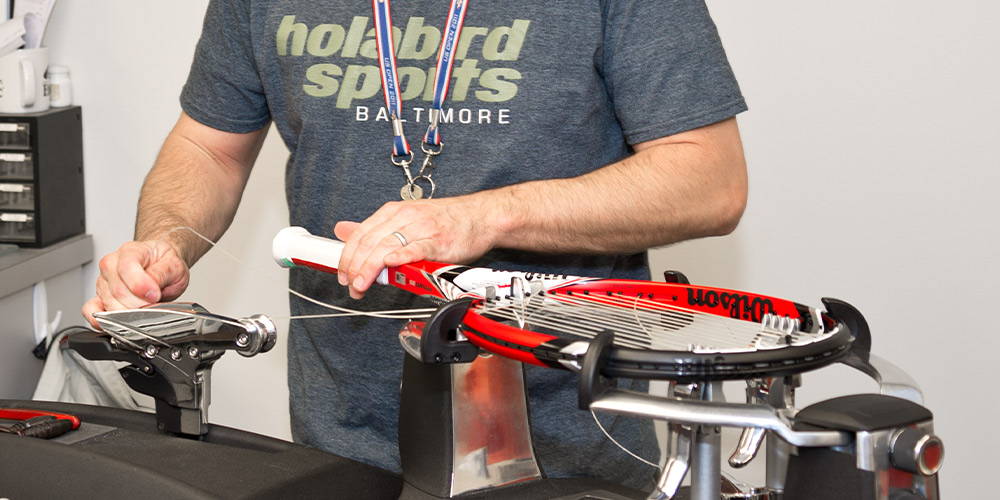Q: Hello, I use an electric Gamma XES stringer, with RPM Blast 17 at 50lbs. About 10% of the time, the string will break when I am pulling tension on the machine. The grommets are fine, and it doesn't matter if I’m using 17 or 16 gauge, as it’s happened on both. I don’t know if it's the string (it's happened with all different kinds of string though), the stringer, or me? Any advice would be so helpful. Losing lots of money on broken strings that never see the court...
A: Sorry to hear you're having trouble! Breaking a set of strings during installation is always a bummer and it's a drain on both your time and your wallet. Although it's tough to pinpoint the exact cause without being there in person to see what's going on, let me see what I can do to help. Based on your description of the issue, it sounds like there are several possible factors that could be causing the strings to break during installation.
First things first, try to get in the habit of taking a look at the string as you take it out of the package. When uncoiling the string, treat it gently so that you don't damage it. If it gets tangled while you're uncoiling, simply stay patient and carefully untangle it. Just yanking and pulling on it rarely gets the string untangled and may just cause kinks and tightening knots that could damage the string. Tangles aside, make sure you carefully inspect the full length for damage (rough spots, unraveling, dents/notches etc.) while uncoiling. This is a pretty simple step that I recommend to anyone who strings, but I don't think it's necessarily the solution to your issue. Manufacturing defects are pretty uncommon and it sounds like your strings are snapping with some frequency, so manufacturing defects are probably not the cause of your problem.
The more likely culprit is either your clamps or your tensioner jaws (or both). Check both to make sure they aren't squeezing the string too tightly. When your clamps or tensioner jaws squeeze the string too tightly, they can "squish" the string, leaving indentations that weaken the string. This can cause the crimped strings to break during installation. Your machine's manual should have instructions for making the necessary adjustments.
Also, make sure that your clamps aren't gripping the strings too loosely. This can allow string to slip through the jaws of the clamp when you pull tension on the next string. As the string slips through the clamp, the jaws can abrade the string which may also lead to premature breakage. Again, you can consult your machine's manual for exact instructions on adjusting your clamps.
In either case, you should also try cleaning your clamps and/or the tensioner jaws with a toothbrush and some rubbing alcohol. This removes the dirt and oil that accumulates over time, allowing your clamps and tensioner jaws to grip better with less pressure.
It sounds like you have already checked the grommets, but aside from the clamps and tensioner jaws, this is another common cause of breakage during installation. If the string is consistently breaking in the same spot on the racquet, you may have a grommet-related issue. If you have the tools and know-how, you can try installing a piece of tubing or an individual replacement grommet. You should also keep a careful eye out when you pull tension on the strings going through the angled grommets (usually the mains just outside of the throat). Sometimes when tension is pulled on those strings, the grommet can pull out a little bit, leaving the string exposed to the edge of the frame.
Other than that, you should also consider the following tips to minimize damage to strings:
- When tying off or tying a starting knot, make sure the knot is not pulled too tightly as this can "choke" the anchor string, causing damage that may compromise the string job.
- When weaving the cross strings, be careful not to pull the strings through the grommet too quickly. Pulling the cross strings through too quickly can cause friction burn that can notch the strings, ultimately leading to premature breakage.
- Finally, be careful with your awl as it is easy to damage the strings when using your awl to enlarge a grommet or clear a path through a blocked hole.
Best of luck and happy stringing!

